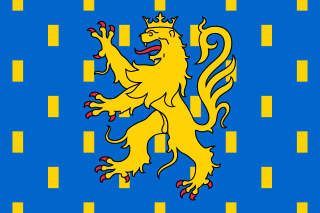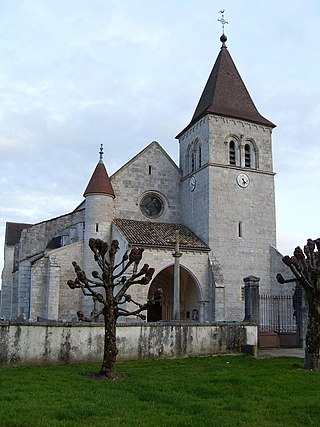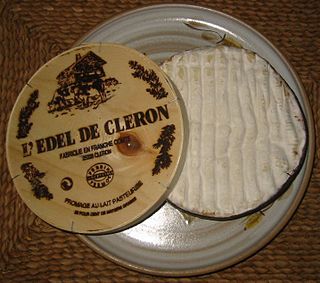
Franche-Comté is a cultural and historical region of eastern France. It is composed of the modern departments of Doubs, Jura, Haute-Saône and the Territoire de Belfort. In 2021, its population was 1,179,601.

The Doubs is a 453-kilometre (281 mi) river in far eastern France which strays into western Switzerland. It is a left-bank tributary of the Saône. It rises near Mouthe in the western Jura mountains, at 946 metres (3,104 ft) and its mouth is at Verdun-sur-le-Doubs, a village and commune in Saône-et-Loire at about 175 m (574 ft) above sea level. It is the tenth-longest river in France.

The arrondissement of Dole is an arrondissement of France in the Jura department in the Bourgogne-Franche-Comté region. It has 190 communes. Its population is 106,246 (2016), and its area is 1,769.5 km2 (683.2 sq mi).

Abbans-Dessous is a commune in the Doubs department in the Bourgogne-Franche-Comté region of eastern France.

Abbans-Dessus is a commune in the Doubs department in the Bourgogne-Franche-Comté region in eastern France.

Quingey is a commune and former canton seat in the Doubs department in the Bourgogne-Franche-Comté region in eastern France.

Arc-et-Senans is a commune in the Doubs department in the Bourgogne-Franche-Comté region of eastern France.

Cussey-sur-Lison is a commune in the Doubs department in the Bourgogne-Franche-Comté region in the cultural and historical region of Franche-Comté in eastern France. On 1 January 2022 it merged with the former commune of Châtillon-sur-Lison to form the new commune of Cussey-sur-Lison.

Lizine is a commune in the Doubs department in the Bourgogne-Franche-Comté region in eastern France.

Mouthier-Haute-Pierre is a commune in the Doubs department in the Bourgogne-Franche-Comté region in eastern France.

Ouhans is a commune in the Doubs department in the Bourgogne-Franche-Comté region in eastern France. The source of the river Loue is in the commune.

Longeville is a commune in the Doubs department in the Bourgogne-Franche-Comté region in eastern France.

Ornans is a commune in the Doubs department in the Bourgogne-Franche-Comté region in eastern France. On 1 January 2016 the former commune Bonnevaux-le-Prieuré was merged into Ornans.

Rennes-sur-Loue is a commune in the Doubs department in the Bourgogne-Franche-Comté region in eastern France.

Saules is a commune in the Doubs department in the Bourgogne-Franche-Comté region eastern France.

Scey-Maisières is a commune in the Doubs department in the Bourgogne-Franche-Comté region in eastern France.
Tarcenay is a former commune in the Doubs department in the Bourgogne-Franche-Comté region in eastern France. On 1 January 2019, it was merged into the new commune Tarcenay-Foucherans.

Champagne-sur-Loue is a commune in the Jura department in Bourgogne-Franche-Comté in eastern France.

Chissey-sur-Loue is a commune in the Jura department in Bourgogne-Franche-Comté in eastern France.

Édel de Cléron is a traditional French cheese of relatively recent origin which carries the name of the village where it is made, Cléron, in the valley of the Loue of the Doubs department in Franche-Comté.




















